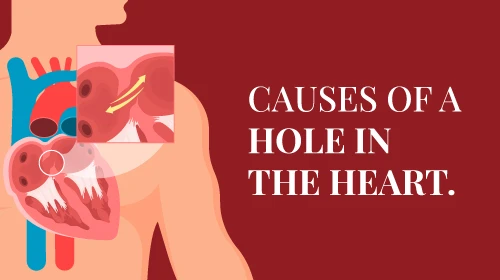Hole in the Heart: Diagnosis and Treatment in Simple Language

A hole in the heart, also known as a congenital heart defect, is a structural abnormality that occurs while the heart is developing in the fetus. It is the most common type of birth defect, affecting about 1% of newborns.
There are different types of holes in the heart, depending on where they are located. The most common types are:
- Atrial septal defect (ASD): A hole in the wall that separates the upper chambers of the heart (atria).
- Ventricular septal defect (VSD): A hole in the wall that separates the lower chambers of the heart (ventricles).
Some holes in the heart are small and close on their own by the time the child is 2 years old. Others may remain open and require treatment.
Symptoms
The symptoms of a hole in the heart vary depending on the size and location of the hole. Some people with holes in their hearts have no symptoms at all, while others may experience symptoms such as:
- Shortness of breath
- Chest pain
- Fatigue
- Cyanosis (blue tint to the skin)
- Palpitations (feeling like the heart is racing or skipping beats)
- Swelling in the legs and feet
Diagnosis
A hole in the heart can be diagnosed during pregnancy or shortly after birth. Doctors may use a variety of tests to diagnose a hole in the heart, including:
- Echocardiogram: An ultrasound of the heart
- Chest X-ray
- Electrocardiogram (EKG): A test that measures the electrical activity of the heart
- Cardiac catheterization: A procedure in which a thin tube is inserted into a blood vessel and threaded up to the heart
Treatment
Treatment for a hole in the heart depends on the size and location of the hole, as well as the presence of any other heart defects. Some holes in the heart may not require treatment, while others may require surgery or other procedures to close the hole.
Surgery
Surgery is the most common treatment for holes in the heart. The type of surgery will depend on the type of hole in the heart and its location.
- Catheter-based repair: This is a minimally invasive procedure that can be used to repair ASDs and some VSDs. A thin tube (catheter) is inserted into a blood vessel in the groin and threaded up to the heart. A patch or plug is then inserted through the catheter and used to close the hole.
- Open-heart surgery: This type of surgery is required to repair larger holes in the heart or holes that cannot be repaired with a catheter-based procedure. An incision is made in the chest and the surgeon repairs the hole in the heart.
Other treatments
In some cases, doctors may recommend other treatments for holes in the heart, such as:
- Medications: Medications may be used to treat symptoms such as shortness of breath, fatigue, and arrhythmia.
- Device closure: This is a minimally invasive procedure that can be used to close some types of holes in the heart. A device is inserted through a catheter and placed over the hole to close it.
Prognosis
The prognosis for people with holes in the heart is generally good. Most people who have surgery to repair a hole in their heart go on to live long and healthy lives.
How to prevent holes in the heart
There is no known way to prevent holes in the heart. However, there are some things that pregnant women can do to reduce the risk of their baby having a hole in the heart, such as:
- Getting regular prenatal care
- Avoiding smoking and drinking alcohol
- Taking certain medications, such as folic acid
Dr. Gurbeer Singh Gill, a renowned cardiologist at Oxford Hospital in Jalandhar, specializes in treating congenital heart conditions, including holes in the heart (ASD and VSD). His expertise lies in providing personalized care to patients, employing both catheter-based procedures and open-heart surgery when necessary. Dr. Gill's dedication to delivering top-notch medical services has made him a trusted figure in the field of pediatric and adult congenital heart treatments in the Jalandhar region, ensuring that patients receive the best possible care for their specific conditions.





